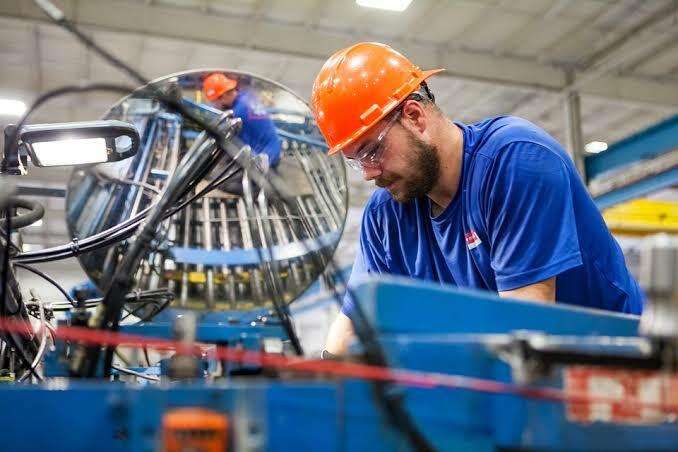When you hear about the secondary sector of the economy, the topic refers to the transformation of the raw material or the natural resources from the exploitation carried out by the primary sector.
Among its functions is the use of specialized equipment and machinery. Likewise, skilled labor for convert extracted resources for the activities of the primary sector in finished products. Also in other semi-processed products that can be transformed into new goods.
Advertisements
From its definition it can be clearly deduced that this sector is closely related to industrial activities, construction and production, in addition, their work depends on the raw material and the resources that come from the sector primary.
That is to say that this economic and industrial sector, is responsible for producing goods for consumption, forming the second link in the production chain, just after the extraction of natural resources.
Advertisements
Hence its importance since it not only uses the raw material for the construction of new products, but also generates greater profits and provides greater added value.

Advertisements
In this article you will find:
Characteristics of the Secondary Sector
Some of the most outstanding characteristics of the secondary sector of the economy are the following:
- You must resort to some energy source for the full development of your activities
- The participation of labor and the use of equipment and machinery is also necessary to achieve production objectives.
- It obtains resources from the primary sector, in the form of raw materials, it also obtains resources from the tertiary sector in the form of financing and other income
- The most important factors in the secondary sector are labor and capital
- For the productive process of this economic sector, the use of equipment and machinery is important. In the case of industries and some SMEs, the production process is often carried out in an automated way
- It is responsible for transforming natural resources and raw materials into finished products, consumer goods or semi-processed products
- Both construction and industry are part of it, this being its main component
- The machines and equipment you use to produce the consumer goods you manufacture are generally powered by some type of energy.
- Among the types of energy it uses are those that are renewable such as solar, wind, hydroelectric or geothermal energy, although They can also use non-renewable energies, such as natural gas, coal, oil, nuclear energy or fuel
- For its proper functioning, it requires an adequate set of material, human and financial resources.
- To start its production process it depends, almost exclusively, on the primary sector of the economy, to which it is closely related
Activities that make up the Secondary Sector
To carry out all the activities of the production process, the secondary sector of the economy is based on several pillars, these are:
Advertisements
1.- Crafts
Arguably, it paved the way for large-scale production and industry in general, it was basically the main activity until the beginning of the Industrial Revolution.
Even when it is carried out on a small scale, there are still small workshops or family or domestic spaces where the production manual of finished goods, made by artisan hands, tries to provide you with a livelihood, since its productivity is incomparable in number and quality with the series production of the large factories.
Advertisements
2.- Construction
The construction sector is one of the most complex. It is made up of multiple activities linked to the creation and transformation of domestic, commercial, manufacturing, urban, health and many other similar spaces. Also, these can be both public and private.
One of its main characteristics is that it tends to advance in sync with the expansion of public works such as schools, roads, squares, avenues, bridges, tunnels, hospitals and the like, this also depends on the growth rate of the population.
3.- Obtaining Energy
In this case we speak of activities aimed at generating energy, necessary for the transformation of resources and raw materials into finished consumer goods or semi-finished products elaborated.
Basically it refers to the efforts required to generate electrical energy.
4.- The Industry
This group is made up of manufacturing factories, workshops, industries that transform resources from the primary sector into finished goods. In addition, through the tertiary sector they may be consumed by members of society.
Its beginning begins with the Industrial Revolution and was fed by the capitalist system, until the present time. The industry today is large and broad, as its activity has grown and developed to become one of the most important activities in the economy of any country.
Thanks to the development and research work carried out in this sector, new production processes have been discovered that minimize costs, shorten times, and minimize waste. They also help to maintain the environment and increase profits, thus also favoring the sustainability of capitalist systems and the development of new technologies.
Industry Types
Being such an important part of the secondary sector, it is convenient to know that the industry can be classified into several types:
- Heavy industries: are those that transform the raw material from products semi-processed, this type of industry is subclassified into the metallurgical industry and the heavy chemical industry
- Light industries: this group produces products for consumption. They are usually subdivided into the automotive industry, the food industry, the computer industry, the light chemical industry and the textile industry.
- Capital goods industries: these are in charge of transforming semi-finished products into finished products and finished goods for the consumption, are usually divided into the aerospace industry, the building materials industry, the electrical industry, the of paper and wood, the agricultural equipment industry, the computer and electronics industry and the transport equipment industry

